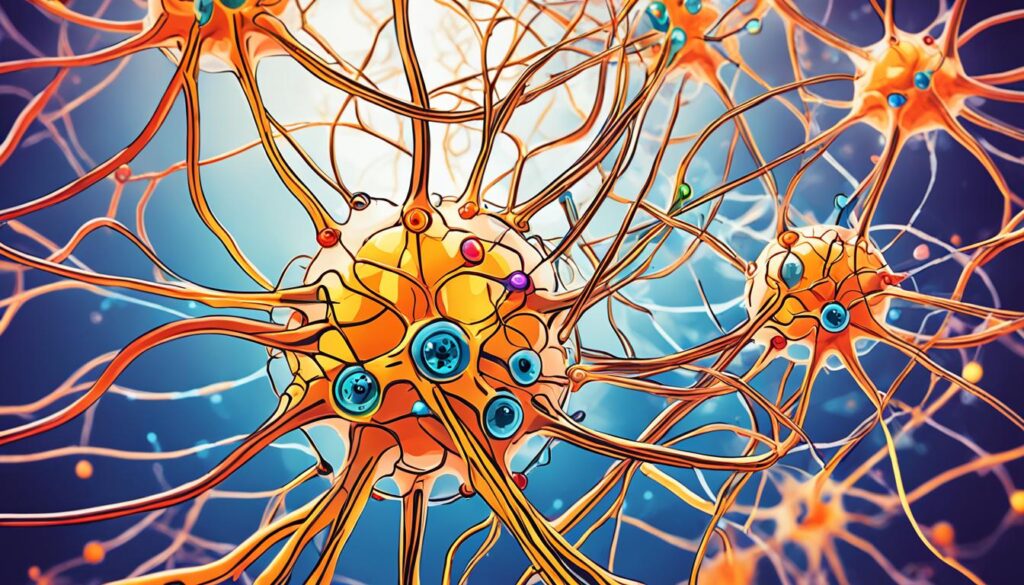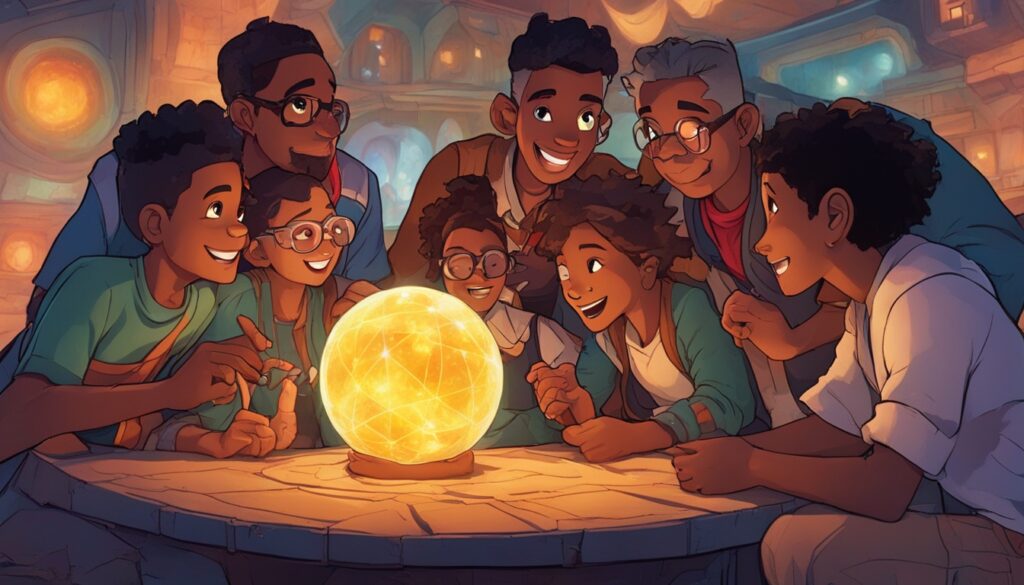Curiosity drives us to understand the world and fuels our learning desire. It’s a quality we all have, ready to be fully used.
As a child, I was always filled with wonder. The world was full of mysteries, from the sound of leaves to the colors of sunsets. Curiosity led me to new ideas and unlocked endless possibilities.
Growing up, I saw curiosity isn’t just for kids. It feeds creativity and lifelong learning. It keeps us moving forward.
A curious mind challenges the usual, seeks new ways, and grows. It helps us understand ourselves and the world better.
Curiosity has always intrigued thinkers, like Virginia Woolf in 1928. She saw its power despite societal barriers against curious people1.
In society today, prejudices like sexism and racism challenge curious minds1. Yet, curiosity brings people together. It builds connections in friendship, society, and culture1.
Key Takeaways:
- Curiosity is a driving force that shapes our understanding of the world and fuels our desire to explore and learn
- A curious mind is not satisfied with the status quo and seeks to challenge assumptions and push boundaries
- Curiosity is a catalyst for creativity, innovation, and lifelong learning
- Societal prejudices can pose challenges to curiosity, but it is a powerful force that connects individuals across diverse backgrounds
- Curiosity is a network account theory that links ideas, facts, and data points within the grids of friendship, society, and culture
The Nature of Curiosity
Curiosity is a key part of being human. It sparks our need to ask questions and learn. Through curiosity, we start an exciting journey of discovery. We are always looking for new things to know.
From an early age, kids show a great deal of curiosity. Research has found that 4-year-olds can notice when something doesn’t add up. This lights up their curiosity2. Teachers and parents are very important in helping this natural curiosity grow. They can do this by creating environments that make kids even more curious2.
But curiosity isn’t just about what we do. It’s also a feeling that makes us want to learn more. Often, we try to measure curiosity by what we see on the outside. Yet, what’s happening inside us is just as important2. To bring out the best in kids’ curiosity, we have to show them how valuable it is to ask questions and explore2.
Curiosity doesn’t stop when we grow up. It also plays a big role in how innovative we are at work. In 2018, a report called “State of Curiosity” showed four main parts of curiosity at work3. These parts help us come up with new ideas and insights.
We can also learn about curiosity by looking at the brain. When we’re curious, certain areas of the brain light up4. This has to do with expecting rewards. The brain releases dopamine, which makes us enjoy new experiences4. This chemical is key in making us feel motivated and eager to learn4.
Curiosity encourages us to keep asking questions and expanding our knowledge. It starts a never-ending journey of learning and discovery. To make the most of curiosity, we have to celebrate our desire to know more and help others do the same.
The Aspects of Curiosity and Innovation in the WordPress
| Aspect | Description |
|---|---|
| 1. Inquisitiveness | A strong desire to seek knowledge, ask questions, and explore new ideas. |
| 2. Openness | A receptive attitude towards new information, ideas, and perspectives. |
| 3. Creativity | The ability to think outside the box, connect seemingly unrelated concepts, and generate novel solutions. |
| 4. Risk-taking | A willingness to embrace uncertainty, take calculated risks, and challenge the status quo. |
By highlighting these aspects, organizations can spark innovation. This creates a place where curiosity thrives3. It helps people achieve more and keep asking questions.
Curiosity is a powerful force inside each of us. It leads us on journeys of discovery and learning. By valuing curiosity, we can inspire future generations. Let’s celebrate the power of curiosity in pushing us further in our quest for knowledge.
The Benefits of Curiosity
Curiosity is not just about knowing more; it boosts our well-being in many ways. It positively affects our psychological, emotional, social, and physical health. Studies back up how curiosity improves our life.
1. Improved Mental Health and Psychological Well-being
Curiosity makes us happier, less anxious, more satisfied with life, and mentally healthier5. It energizes our mind, leading to new interests and a sense of achievement. This joy boosts our overall wellness.
2. Enhances Learning and Academic Achievement
Curiosity drives us to think deeper and solve problems creatively6. It has been tied to better grades, more engagement in learning, and improved work performance5. Being curious helps us grow and learn continuously.
3. Strengthens Social Relationships
A study showed that curious people are seen as more friendly and appealing5. Curiosity builds stronger bonds through listening and empathy. By showing real interest in others, we deepen our connections.
4. Promotes Inclusive Work Cultures
Curiosity leads to more inclusive workplaces by reducing bias6. It encourages us to explore different views and question our assumptions. This supports teamwork and innovation by valuing diverse ideas.
5. Improves Physical Health
Curiosity also helps our physical health. It lowers anxiety, which in turn, increases life satisfaction and health7. By easing stress, curiosity enhances our overall health.
Embracing curiosity opens up new experiences and knowledge67. It makes life richer and more fulfilling, both personally and in our careers.

The Neuroscience of Curiosity
Curiosity drives us to learn, make decisions, and invent new things. Scientists are paying more attention to how curiosity affects our brains and behaviors8. Our brain’s craving for rewards helps us enjoy seeking answers and new experiences.
When something interesting catches our eye, our brain releases dopamine9. This chemical makes us want to explore and learn more. It also helps us think creatively and makes it easier to remember what we learn89.
Experts have found special brain areas that light up with curiosity9. The substantia nigra and hippocampus are parts of the brain involved in this process. They help us process rewards, remember things, and put together information. This lets us understand how curiosity helps us learn and grow smarter9.
Curiosity comes in two main types: epistemic and social9. Epistemic curiosity makes us want to discover and understand new things. Social curiosity is about being interested in other people’s lives and thoughts. Both kinds help us learn better and become more creative9.
The Network Neuroscience of Curiosity
Zurn and Bassett talk about three ways people show curiosity: like a busybody, hunter, or dancer10. These styles help us see the differences in how we all get curious. They also offer clues about the brain networks involved in our curiosity10.
Knowing about curiosity’s brain mechanics is crucial for teaching and leading10. The book “Curious Minds” suggests a teaching method focused on curiosity. This approach can make learning more fun and engaging for everyone10. Teachers can use curiosity to connect concepts and people, turning students into eager learners and thinkers10.
Leaders should also embrace curiosity10. It makes them more open to new ideas, which helps in adapting and innovating. Encouraging a curious mindset in teams can lead to constant learning and discovery. This is key to a successful organization.

In the end, curiosity intertwines with our brain’s desire for rewards, the joy of learning, and the drive to innovate. Understanding and encouraging curiosity can enhance our thinking, ignite innovation, and create a welcoming space for learning.
Cultivating Curiosity in Leadership
Leadership is key to sparking curiosity at work. It creates a space where asking questions, trying new things, and learning is encouraged. This approach helps teams reach their full potential and succeed in a changing world.
“The important thing is not to stop questioning.” – Albert Einstein11
Curiosity makes teams more creative and better at solving problems. When people can think freely and seek new solutions, it leads to big achievements. This helps a company grow and succeed12.
Curiosity also helps leaders understand their team better. Knowing what drives each person, their challenges, and what they need builds trust. This trust makes working together smoother and more productive12.
It ties back to having a mindset that sees challenges as chances to grow. Leaders who don’t give up and are always looking to learn foster a culture of constant improvement and new ideas12.
Leaders can spark curiosity by encouraging their teams to ask “why” more often. This practice helps everyone think deeper and come up with creative solutions12.
Listening well is another way to encourage curiosity. By really hearing what team members say, leaders can discover new perspectives and avenues to explore12.
Table: Cultivating Curiosity in Leadership
| Benefits | Statistical Data Reference12 |
|---|---|
| Increased team creativity and problem-solving | Curiosity in leadership encourages thinking outside the box and leads to innovative solutions. |
| Enhanced team building and trust | Curiosity towards team members’ motivations, challenges, and preferences fosters increased trust and respect. |
| Growth mindset and innovation | Embracing challenges, persistence, and learning from criticism is linked to the concept of a growth mindset. |
| Deeper understanding and critical thinking | Encouraging questioning fosters deeper understanding and critical thinking within teams. |
| Valuable insights and exploration | Active listening uncovers valuable insights and opportunities for further exploration. |
Companies like Amazon show how curiosity leads to success. They constantly question how things are done and strive for better ways. This mindset leads to market improvements and exceptional achievements13.
Curiosity breaks down walls that hold back learning and innovation. Being too sure stops us from seeing new ideas. But with an open mind, leaders can welcome fresh solutions13.
Staying persistent is crucial in staying curious. Howard Temin’s story in virology is a great example. His unyielding curiosity brought significant discoveries in diseases like HIV-AIDS and COVID-1913.
Curiosity is also important for growing as a leader. Asking questions and being willing to explore unknowns helps leaders and their teams grow personally and professionally13.
Organizations that value curiosity are better at innovating, growing, and adapting. Curiosity guides leaders through uncertain times, driving change and ensuring success for their teams and companies13.

Curiosity and Inclusion
Curiosity helps us welcome and understand the diversity in our organizations and communities. It helps us know others better and creates a caring and open environment.
Research shows inclusivity is a goal for companies everywhere14. Through talks, surveys, and interviews, they improve in listening and understanding14. Yet, reaching full inclusivity remains a challenge for many14. True inclusion means more than just survey numbers14.
Inclusion is about making everyone feel they belong14. Leaders must act in ways that build an inclusive culture14. When leaders embrace diversity and curiosity, they encourage everyone to do the same14.
Organizations can use the Human Leadership Framework to grow inclusivity14. It focuses on leading with courage, compassion, and curiosity14. Leaders who follow these values make workplaces where everyone thrives14.
Staying curious helps us grow and learn. It makes us value diversity and build strong connections15. Curious cultures attract varied talents, spark innovation, and lead to success, like the Curiosity Mars rover project15.
Curiosity can transform organizations. It pushes us to think differently and value diverse views15. Leaders who are curious welcome different perspectives and foster openness15.
Curiosity is key for inclusion, diversity, and mental well-being. It helps us think openly and avoid negative patterns16. For good mental health, it’s important to explore both the world and our thoughts16. Without self-reflection, constant novelty-seeking can make us unhappy16.
Curiosity about new experiences can change how we think and grow personally16. Like making a path in snow, curiosity creates new paths in our minds16.

| Benefits of Cultivating Curiosity for Inclusion |
|---|
| Enhanced understanding and appreciation of diversity |
| Stronger relationships and deeper connections |
| Promotion of inclusive behaviors and attitudes |
| Attraction and retention of diverse talent |
| Development of innovative cultures |
Curiosity is crucial for creating an inclusive culture. It leads to learning, stronger bonds, and valuing diversity. By being curious, we can all contribute to a more inclusive future.
Curiosity in Uncertain Times
When uncertainty is high, curiosity becomes incredibly valuable. It helps us manage our fear of what we don’t know. Through curiosity, we find joy in learning and discovering new things. This lets us explore new paths, think in unique ways, and adjust to changes.
By being curious, both people and groups can face uncertain times with more resilience and creativity. It equips us to better handle the challenges that come.
The Power of Curiosity
In times of uncertainty, the future can look scary and full of unknowns. This fear can stop people from acting. Yet, curiosity shines a light, pushing us to explore and learn more.
Research shows that being curious makes learning smoother and boosts our ability to solve problems17. Seen as an essential skill in tough times, it sparks a desire for knowledge and helps us adapt17. When things are uncertain, our curiosity grows, driving us to learn and expand17.
Fostering Curiosity in Uncertain Times
There are many ways to encourage curiosity when times are tough. Asking open-ended questions helps us see things from different angles18. Encouraging continuous learning makes us want to take on new challenges and grow our knowledge18.
Seeing failure as a chance to learn lets us face the unknown without fear18. If we create a culture that values curiosity and rewards exploration, it inspires creative thinking and open-minded problem solving18.
The Impact of Curiosity on Decision-Making
Curiosity is vital in making decisions, especially in uncertain times. It keeps us open to new ideas and ready to take on the unknown18. Gathering more data and checking our guesses is important, and curiosity helps with that19.
As uncertainty grows, so does interest in things like sustainability and ethical practices17. Research into fake news and belief formation online underscores curiosity’s role in decision-making17.
The Growth Mindset and Curiosity
Having a growth mindset pairs well with being curious during uncertain times. Believing we can grow our skills through effort makes us more eager to learn18. A growth mindset leads us to see challenges as chances to improve. It encourages us to face challenges with curiosity and resilience.

The Benefits of Curiosity in Uncertain Times
Curiosity has many benefits when we’re unsure of the future. It fuels innovation, making creative solutions and new ideas bloom18. It drives our ability to tackle difficult problems with fresh perspectives17.
Furthermore, fostering curiosity helps individuals and organizations grow. Curious leaders build cultures that embrace new ideas18. Companies focused on curiosity create learning environments. Here, everyone is motivated to improve and adapt no matter what comes18.
In tough times, curiosity is like a superpower. It helps us meet the unknown with bravery, flexibility, and a love for learning. By cultivating curiosity and embracing growth, we and our organizations can succeed even when the road ahead is unclear1817.
The Never-Ending Curiosity
Curiosity pushes us to explore and learn. It drives our constant quest for knowledge. We want to understand our world, ask questions, and find new experiences. This helps us grow and succeed in changing environments.
Being always curious means we’re open to new ideas and chances to grow. Our minds stay sharp, ready for new challenges. This way, we can easily handle changes and uncertainties. It encourages us to keep learning all our lives.
Studies have found that curiosity improves our mind’s ability. Statistically20, it makes learning easier and more fun. Our brains love interesting information, making curiosity key to learning well.
“Curiosity is vital for learning, no matter your age.”20
Curiosity also sparks creativity and innovation. It leads us to see things differently, find new answers, and push limits. With curiosity, we can solve problems in imaginative ways.
It also brings joy and fulfillment to our lives. Curiosity lets us discover the beauty of our world, as data21 shows. Life becomes an adventure, with every day a chance to learn and grow.
But curiosity isn’t just for us. It helps us connect with others. Being genuinely curious, we have deeper talks and learn about different lives. This builds empathy and understanding.
In “A Curious Mind”22, Brian Grazer talks about the value of curiosity chats. These discussions open us to new ideas and personal growth. They make us better listeners and thinkers, enriching our understanding of the world.
Curiosity is an endless journey. It keeps us thinking, interested, and ready for life. It’s key to personal and career success, helping us face challenges and embrace change. By staying curious, we learn more and reach our highest potential.

Conclusion
In conclusion, the power of curiosity is huge. It drives personal growth, innovation, and never-ending learning. Embracing curiosity helps people reach their top potential. It also sparks creativity and helps them adjust to changes. By nurturing a curious mindset, we can be more focused, persistent, and able to critique ourselves23.
Being open to new knowledge makes us better at making decisions. It also grows our empathy and understanding of others24. Curiosity leads to new inventions and can change industries. This is seen in the work of creators like Temple Grandin and James Dyson25. To keep a curious mind, we should question what we know, explore new ideas, and listen to different viewpoints. This lets us keep growing and learning25.
So, let’s cherish our curiosity. It’s the key to a life filled with discovery and self-improvement.









